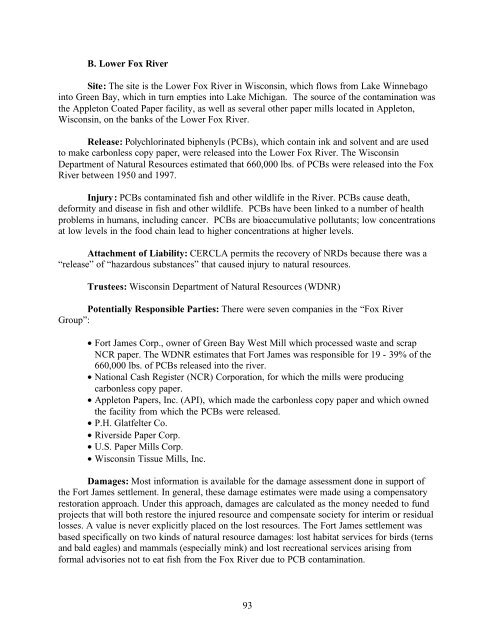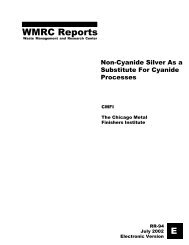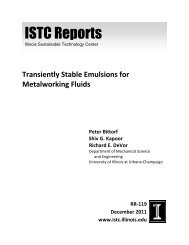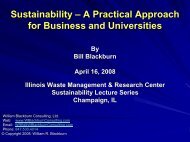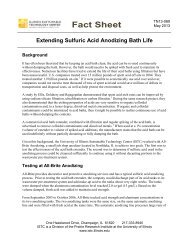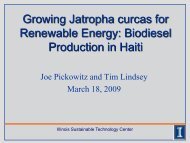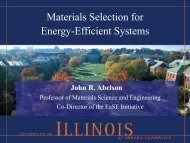Natural Resource Damage Assessment: Methods and Cases
Natural Resource Damage Assessment: Methods and Cases
Natural Resource Damage Assessment: Methods and Cases
You also want an ePaper? Increase the reach of your titles
YUMPU automatically turns print PDFs into web optimized ePapers that Google loves.
B. Lower Fox River<br />
Site: The site is the Lower Fox River in Wisconsin, which flows from Lake Winnebago<br />
into Green Bay, which in turn empties into Lake Michigan. The source of the contamination was<br />
the Appleton Coated Paper facility, as well as several other paper mills located in Appleton,<br />
Wisconsin, on the banks of the Lower Fox River.<br />
Release: Polychlorinated biphenyls (PCBs), which contain ink <strong>and</strong> solvent <strong>and</strong> are used<br />
to make carbonless copy paper, were released into the Lower Fox River. The Wisconsin<br />
Department of <strong>Natural</strong> <strong>Resource</strong>s estimated that 660,000 lbs. of PCBs were released into the Fox<br />
River between 1950 <strong>and</strong> 1997.<br />
Injury: PCBs contaminated fish <strong>and</strong> other wildlife in the River. PCBs cause death,<br />
deformity <strong>and</strong> disease in fish <strong>and</strong> other wildlife. PCBs have been linked to a number of health<br />
problems in humans, including cancer. PCBs are bioaccumulative pollutants; low concentrations<br />
at low levels in the food chain lead to higher concentrations at higher levels.<br />
Attachment of Liability: CERCLA permits the recovery of NRDs because there was a<br />
“release” of “hazardous substances” that caused injury to natural resources.<br />
Trustees: Wisconsin Department of <strong>Natural</strong> <strong>Resource</strong>s (WDNR)<br />
Potentially Responsible Parties: There were seven companies in the “Fox River<br />
Group”:<br />
• Fort James Corp., owner of Green Bay West Mill which processed waste <strong>and</strong> scrap<br />
NCR paper. The WDNR estimates that Fort James was responsible for 19 - 39% of the<br />
660,000 lbs. of PCBs released into the river.<br />
• National Cash Register (NCR) Corporation, for which the mills were producing<br />
carbonless copy paper.<br />
• Appleton Papers, Inc. (API), which made the carbonless copy paper <strong>and</strong> which owned<br />
the facility from which the PCBs were released.<br />
• P.H. Glatfelter Co.<br />
• Riverside Paper Corp.<br />
• U.S. Paper Mills Corp.<br />
• Wisconsin Tissue Mills, Inc.<br />
<strong>Damage</strong>s: Most information is available for the damage assessment done in support of<br />
the Fort James settlement. In general, these damage estimates were made using a compensatory<br />
restoration approach. Under this approach, damages are calculated as the money needed to fund<br />
projects that will both restore the injured resource <strong>and</strong> compensate society for interim or residual<br />
losses. A value is never explicitly placed on the lost resources. The Fort James settlement was<br />
based specifically on two kinds of natural resource damages: lost habitat services for birds (terns<br />
<strong>and</strong> bald eagles) <strong>and</strong> mammals (especially mink) <strong>and</strong> lost recreational services arising from<br />
formal advisories not to eat fish from the Fox River due to PCB contamination.<br />
93


